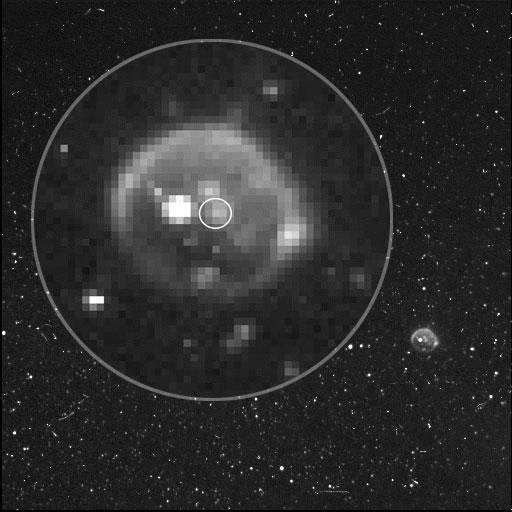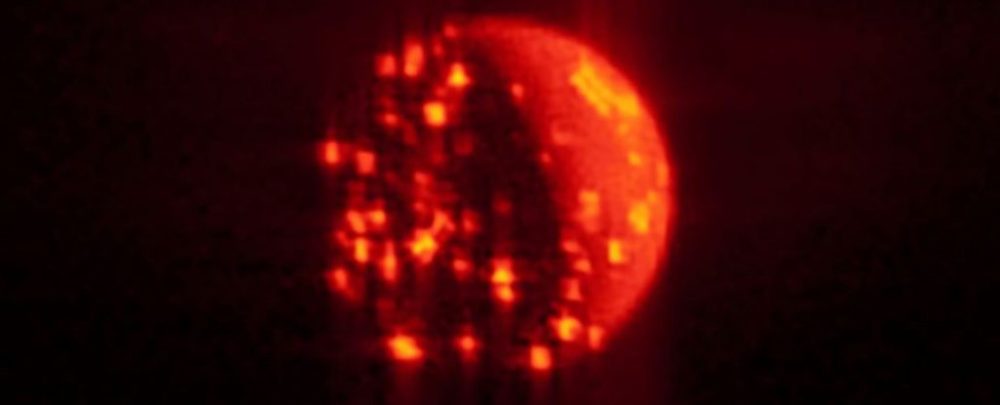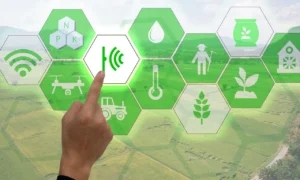NASA’s solar-powered Juno spacecraft has captured new images of the volcanic plume on Jupiter’s moon Io. These images were taken during the mission’s 17th flyby of the gas giant on Dec. 21, at 12:00, 12:15 and 12:20 UTC (08:00, 08:15, 08:20 EDT; 04:00, 04:15, 04:20 PST), respectively. Four of Juno’s cam captured the images of the Jovian’s moon Io. It is the most volcanic body in the entire solar system, on the mission’s 17th flyby of the gas giant. At the time, IO was about to enter into Jupiter’s shadow in order to become totally eclipsed.
Related: NASA’s New Horizons Reaches Most Distant Target in History
Reconstructed image acquired by the JunoCam at 12:20 (UTC) on Dec. 21, 2018. Credit: NASA/SwRI/MSSS
The images demonstrate the beautiful moon, half-illuminated with a bright spot seen just beyond the terminator (the day-night boundary). As after IO had passed into the darkness of total eclipse behind Jupiter, the sunlight reflected off of moon Europa helped in illuminating Io and so its plume. The timing proved to be very favourable for the Juno mission team.
The brightest feature on Io that can be seen in the image is thought to be a penetrating radiation signature which is a reminder of this satellite’s role in feeding Jupiter’s radiation belts, while other features demonstrate the flow of activity from these volcanoes.
Scott Bolton, the principal investigator of the Juno mission and an associate vice president of the Southwest Research Institute’s Space Science and Engineering Division, explained in an SwRI press release:”We knew we were breaking new ground with a multi-spectral campaign to view Io’s polar region, but no one expected we would get so lucky as to see an active volcanic plume shooting material off the moon’s surface. This is quite a New Year’s present showing us that Juno has the ability to clearly see plumes.” The images can lead to new insights into the gas giant’s interactions with its five moons, causing phenomena such as Io’s volcanic activity or freezing of the moon’s atmosphere during an eclipse, added Bolton.
Related: NASA Hubble Snaps Gorgeous Image Of Epic ‘holiday wreath’ in Space
The images were captured by multiple instruments in the probe’s scientific suite, including the JunoCam, the Stellar Reference Unit (SRU), the Jovian Infrared Auroral Mapper (JIRAM) and the Ultraviolet Imaging Spectrograph (UVS). These instruments together observed the Io’s polar region for over about an hour, and during this time an unexpected lava plume occurred. By 12:40 UTC (08:40 EDT; 04:40 PST), Io had passed completely into Jupiter’s shadow and then it went dark.
Io’s volcanoes were discovered by NASA’s Voyager spacecraft in the year 1979. Io’s gravitational interaction with Jupiter drives the moon’s volcanoes which in turn emits umbrella-like plumes of SO2 gas and produces extensive basaltic lava fields. The recent Io images were captured at the halfway point of the mission, which is scheduled to be completed in July 2024. Launched in 2011, Juno arrived at Jupiter on July 5th, 2016.

Image captured by Juno’s Stellar Reference Unit (SRU) camera shortly after Io was eclipsed by Jupiter at 12:40:29 (UTC) Dec. 21, 2018. Credit: NASA/JPL-Caltech/SwRI
The spacecraft orbits Jupiter every 53 days, to gather a great deal of information on its auroras, atmosphere and magnetosphere. The solar-powered Juno features eight scientific instruments which are designed to study Jupiter’s interior structure, atmosphere and magnetosphere.
This article was originally published by Universe Today


















